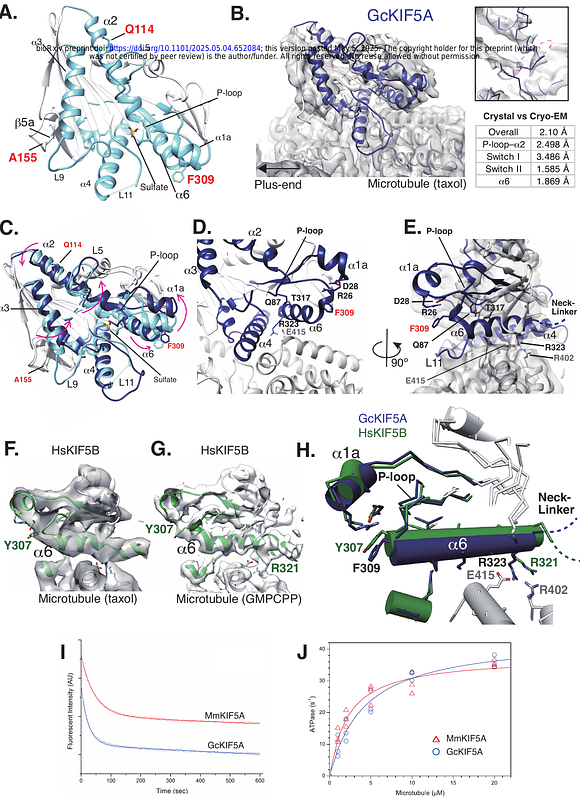Enhanced axonal transport in large vertebrates: KIF5A adaptations in giraffes and pythons

Enhanced axonal transport in large vertebrates: KIF5A adaptations in giraffes and pythons
Kambara, T.; Rao, L.; Yamagishi, Y.; Ikeda, K.; Taniguchi, D.; Imasaki, T.; Shigematsu, H.; Sakai, N.; Gennerich, A.; Nitta, R.; Okada, Y.
AbstractEfficient axonal transport is essential for neuronal function, particularly in species with exceptionally long axons. The Kinesin-1 motor protein KIF5A plays a key role in this process, but whether and how it adapts to the transport demands of large vertebrates remains unclear. Here, we show that KIF5A from giraffes (GcKIF5A) and pythons (PbKIF5A), moves 25% faster than its mouse counterpart (MmKIF5A) on neuronal microtubules in vitro and within axons of cultured mouse hippocampal neurons. This enhanced velocity, driven by three unique amino acid substitutions (R114Q, S155A and Y309F), facilitates long-distance transport in these species and represents a case of convergent evolution. Our structural analysis reveals that accelerated ADP release underlies the increased speed of GcKIF5A. Despite exhibiting a reduced force generation, GcKIF5A maintains efficient cargo transport under load. Furthermore, GcKIF5A exerts less drag in mixed-motor environments, an adaptation particularly beneficial for multiple motor-driven long-distance axonal transport. These findings reveal that KIF5A has evolved specific adaptations to facilitate efficient axonal transport in large vertebrates, highlighting the evolutionary plasticity of kinesin motors.